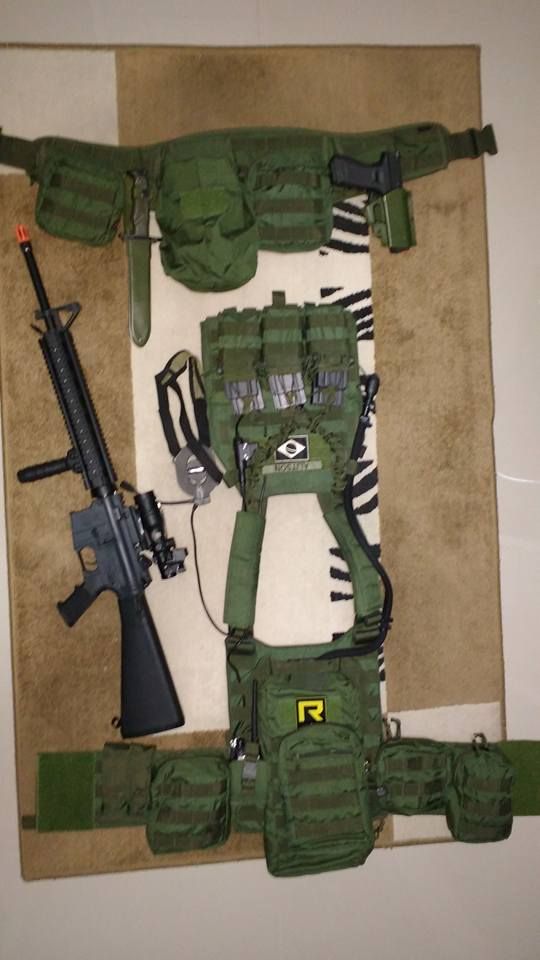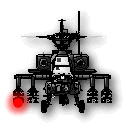Sistemas Anti-Aéreos muito interessantes que poderiam servir de base para uma futura plataforma anti-aérea conjunta da Força Aérea Brasileira, Exército Brasileiro e Fuzileiros Navais da Marinha do Brasil.
1. STRELA-10M3, RUSSIA
The SA-13 Gopher is a short-range, low altitude SAM. The TELAR vehicle is a modified MT-LB amphibious armoured tracked vehicle with the machine-gun turret removed. The launcher pedestal, mounted to the rear center of the vehicle is 360º traversable. The operator’s position is behind a large, rectangular window at its base. The system incorporates a range-only radar which provides an operator the target’s range to the system. There are two versions of the TELAR variant of the MT-LB vehicle in service, designated TELAR-1 and TELAR-2. Appraisal of both does not show any significant structural differences but it is known that the TELAR-1 carries four passive radar detection antenna units, one on either corner of the vehicle's rear deck, one facing aft and one between the driver's vision ports at the front, whereas the TELAR-2 has none. TELAR-1 is apparently used by the SA-13 battery commander.
Known as the Strela-10 system, the SA-13 missile has a maximum speed of Mach 2, carries a 5kg HE warhead and is fitted with either an improved passive lead sulphide all-aspects infra-red seeker unit, or a cryogenically cooled passive all-aspects infra-red seeker unit. Normally the TELAR carries 4 ready-to-fire SA-13 missiles in the container-launchers and eight reloads in the cargo compartment. However, it might also have 9K31 Strela-1 (SA-9 Gaksin) missiles in the container-launcher boxes or a mixture of both. This enables battlefield features of both missiles to be utilized fully by allowing the less expensive SA-9 missile to be used against easier targets, while the more expensive and sophisticated SA-13 missile against difficult targets. It also allows a choice of infra-red seeker types on the missiles for use against extremely low altitude targets as well as in adverse weather conditions. Some vehicles have a pintle-mounted PKT 7.62mm machine gun in front of the forward hatch for local protection. Other vehicles have been additional support railings for the missile system on the rear deck. The circular parabolic radar antenna is located between the two pairs of missile canisters and is a simple range-only set to prevent wastage of missiles outside the system's effective range.


Apart from the Strela-10M2, another version has been developed and is designated as the Strela-10M3. This is designed for use to defend troops on the march from low level attacks by aircraft and helicopters, precision-guided munitions and other flying vehicles such as reconnaissance unmanned air vehicles. The major change in the Strela-10M3 is the adoption of a dual mode guidance system for the missile seeker - optical photo-contrast and dual band passive IR. Target acquisition range using the optical photo-contrast channel is between 2000 - 8000 metres whilst for the infra-red channel it is between 2300-5300 metres. The HE-fragmentation rod warhead weighs 5kg in total, including 2.6kg of HE, and uses both contact and active laser proximity fusing systems. The actuation radius of the proximity fuse is up to 4 metres. The dual mode passive optical photo-contrast/infra-red seeker ensures good infra-red decoy counter-counter measures discrimination capability and optimum use of the system against diverse and extremely low altitude targets as well as in adverse weather conditions.
2. TUNGUSKA M1 LOW LEVEL AIR DEFENSE SYSTEM, RUSSIA
Tunguska-M1 is a gun/missile system for low-level air defence. The system was designed by the KBP Instrument Design Bureau in Tula, Russia and is manufactured by the Ulyanovsk Mechanical Plant, Ulyanovsk, Russia. It can engage targets while stationary and on the move, using missiles for long-range targets and guns for close-in defence. It is designed for defence against both fixed-wing aircraft and helicopters and can also fire on ground targets.
Tunguska entered service with the Russian army in 1988 and has been exported to Germany, India, Peru and Ukraine.

ARMAMENT
The Tunguska-M1 vehicle carries eight 9M311-M1 surface-to-air missiles. The missile (NATO designation SA-19 Grison) has semi-automatic radar command to line-of-sight guidance, weighs 40kg with a 9kg warhead. It is 2.5m long with a diameter of 1.7m and wingspan of 2.2m. The missile's maximum speed is 900m/s and can engage targets travelling at speeds up to 500m/s. Range is from 15 to 6,000m for ground targets and 15 to 10,000m for air targets.
Two twin-barrel 30mm anti-aircraft guns are mounted on the vehicle. These guns have a maximum firing rate of 5,000 rounds per minute and a range of 3,000m against air targets. This extends to 4,000m against ground targets.

FIRE CONTROL
The system has target acquisition radar and target tracking radar, optical sight, digital computing system, tilt angle measuring system and navigation equipment. Radar detection range is 18km and tracking range is 16km.
VEHICLE
The Tunguska-M1 system is mounted on a 34t tracked vehicle with multi-fuel engine. It has hydromechanical transmission, hydropneumatic suspension which allows for changing road clearance and hydraulic track-tensioning. The armoured turret has both laying and stabilisation drives and power supply. Air-conditioning, heating and filtration systems are fitted.
A Tunguska-M1 battery is composed of up to six vehicles and will also include a transloader as well as maintenance and training facilities.
The armoured turret has both laying and stabilisation drives and power supply. Air-conditioning, heating and filtration systems are fitted. A Tunguska-M1 battery is composed of up to six vehicles and will also include a transloader as well as maintenance and training facilities.
3. OSA-AKM, RUSSIA
The SA-8b Gecko is a single-stage, solid-fuel, short-range, low-altitude, all-weather SAM. The TELAR vehicle is six wheeled with driver's compartment at the front of the vehicle which has accommodation for two; the driver and commander, with access to it via a hatch in the roof. The engine is at the rear. Four command-guided missiles are carried ready to launch, two either side. The main, conical-scan, fire control radar is at the rear of a one-man, gunner-radar operator position and folds back 90º to reduce the overall height of the vehicle for air transport and during high speed road travel.
The radar operates in the H-band with a 360º traverse and has a max. range of 35 km. Each battery also has two missile transloaders based on the same chassis with a long coffin-like blunt pointed tarp roofed structure covering the cargo space and crane. When operating, the blunt point area is raised and the tarped structure is slid to the rear. A total of 18 reloads in boxed sets of three are transferred to the TELAR by a hydraulic crane mounted centrally behind the vehicle cab. In the regiment maintenance battery there is a single radar collimation vehicle using the same chassis. This has a collimation antenna which lies on both sides of the vehicle and overhangs the rear during transit. It is raised during operation and mounted on each side of the hull directly behind the cab.

In operation it is raised and mounted on each side of the hull directly behind the cab. The SA-8b is contained in a rectangular launch box it has improved guidance and speed characteristics to give it a maximum range of 15km. The warhead weight of the missile is 19kg. The reloading time is five minutes. Combat deployment time is four minutes with the system reaction of 26 seconds. The surveillance radar operates in the H-band and has an effective range of around 30 km against a typical target. The tracking radar is of the pulsed type and it operates in the J-band with a range of 20 - 25 km. The I-band guidance radar makes it possible to launch two missiles at the same target, each one responding to a different frequency to frustrate ECM.

Mounted on top of each missile guidance radar is an LLLTV/optical assist system for target tracking in low visibility and heavy ECM. The radar is also known to have a short-range target acquisition capability. The vehicle is fully amphibious, being propelled in the water by two water jets at the rear of the hull. The vehicle is fitted with an air filtration and over pressure NBC system together with IR systems for the commander and driver. The SA-8b can have six missile canisters with a reconfigured rear end. In 1991, the SA-8b TELs were seen with an additional small sized radar antenna fitted above the surveillance radar. It is possible that the antenna may be associated with a new IFF system.
4. PANTSYR S1 AIR DEFENSE MISSILE/GUN SYSTEM, RUSSIA
Pantsyr-S1 is a close-in air defence system designed to defend ground installations against a variety of weapons including both fixed-wing aircraft and helicopters, ballistic and cruise missiles, precision-guided munitions and unmanned air vehicles. It can also engage light armoured ground targets. It was designed by the KBP Instrument Design Bureau of Tula, Russia, and is manufactured by the Ulyanovsk Mechanical Plant, Ulyanovsk, Russia.
The United Arab Emirates has ordered 50 Pantsyr-S1 systems to be delivered by 2005.
ARMAMENT
Pantsyr-S1 carries twelve 57E6 surface-to-air missiles on launchers. The missile has a bicalibre body in tandem configuration, separable booster and sustainer with separation mechanism. The sustainer contains the warhead and contact and proximity fuzes. The fragmentation rod warhead weighs 16kg. The missile weighs 65kg at launch and has a maximum speed of 1,100m/s. Range is from 1 to 12km.

Two 2A72 30 mm guns are fitted with 750 rounds of a variety of ammunition - HE (High Explosive) fragmentation, fragmentation tracer, armour-piercing with tracer. Ammunition type can be selected by the crew depending on the nature of the target. Maximum rate of fire is 700 rounds per minute. Range is up to 4km.
FIRE CONTROL
The Pantsyr-S1 fire control system includes a target acquisition radar and dual waveband tracking radar, which operates in the millimetre and centimetre waveband. Detection range is 30km and tracking range is 24km for a 2 - 3cm² target. This radar tracks both targets and the surface-to-air missile while in flight.
As well as radar, the fire control system also has an electro-optic channel with long-wave thermal imager and infrared direction finder, including digital signal processing and automatic target tracking. A simplified, lower-cost version of Pantsyr-S1 is also being developed for export, with only the electro-optic fire control system fitted.
The two independent guidance channels - radar and electro-optic - allow two targets to be engaged simultaneously. Maximum engagement rate is 12 targets per minute.

VEHICLE
Pantsyr-S1 is mounted on a 10t Ural-5323 truck chassis with a turret that houses the armament, laying drives, sensors, control equipment and crew.
The Ural-5323 truck is four-axle, 8 x 8 all-wheel drive with single tyre wheels. The first and second axle wheels are steerable. The engine is an air-cooled diesel Ural-745.10 providing 290hp. The dual-plate mechanical clutch has a pneumatic booster and three-range five-speed gearbox. A two-stage transfer case has lockable symmetrical interaxle differential. Suspension is by rigid-axle bogie on longitudinal semi-elliptical leaf springs. Front suspension is fitted with hydraulic shock absorbers.
The Ural-5323 can ford up to 1.75m of water.
A shelter-based version of the Pantsyr-S1 is also being developed.
5. Machbet, Tracked Armoured Air Defence Vehicle, Israel
The Israeli Aircraft Industries (IAI) developed the Machbet in the mid 1990's. It had undergone testing in the IDF in 1997 and entered operational service in 1998. Pending on budget issues, the IAF is planning to convert all its Hovet APC to the newer Machbet configuration.

The Machbet is an advanced MBT air defense product, in service in the Israeli Air Force. It adds an enhanced suit of TV and FLIR target auto-tracking capability to M113/Vulcan/Stinger launchers. A unit-level fire coordination and management capability is provided, as well as an interface to a sectorial air surveillance radar for the air targets picture. These all enable to acquire approaching targets at an early stage, making the weapons much more efficient.
500m minimum range; 6,000m maximum range against helicopters; 8,000m against aircraft
Interfaces with the EL/M 2106 search radar
Adaptable to Stinger, MISTRAL, SA-16, SA-18 and other short range missiles.

It is almost identical to the Hovet, but atop the turret is a launching box with 4 Stinger launchers. This vehicle was a surprise to enemy pilots who felt they had spotted a standard PIVAD (Product Improved Vulcan Air Defense System) and thought they were out of range of it.
Deixo ai algumas sugestões de possíveis plataformas que poderiam servir de base para uma plataforma conjunta, logo ressalto que a plataforma que mais me agrada é o Machbet, pois hoje dispomos de um número elevado de M-113 no exército que poderiam servir de base para este veículo. Poderíamos aplicar a este o mesmo aparato eletrônico israelense, porém no lugar do canhão Vulcan poderíamos aplicar o DEFA de 30mm, o Bofors de 40mm ou mesmo a GAM BO1 de 20mm, além de trocarmos os Stingers pelos Mistral franceses.
Com outras plataformas poderíamos transformá-las em veículos remuniciadores, controle, oficina e socorro. Além de darmos assim um final de vida merecido a estas células que tanto serviram ao EB e MB, além de resolvermos um problema muito grave em nossas forças armadas.
Valeu!!!!











